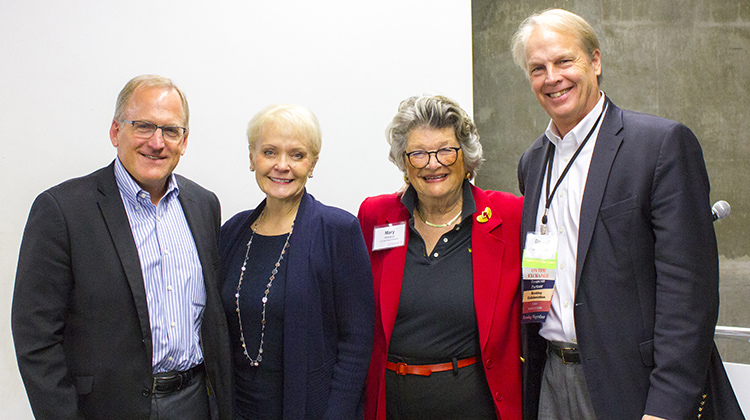
Two-thirds of veterans leave the military without a job—how can workforce development better serve those who’ve served? Part of the answer, according to the opening discussion of the Council on Foundations’ (COF) Veterans Philanthropy Exchange’s Mid-Year Convening, lies in understanding that the world of work is changing for everyone, including veterans.
“It’s about employability, not just about a job,” says Mary Lindenstein Walshok, Ph.D., Dean of UC San Diego Extension. “Employability is the secret to success in the modern world,” she says, noting a host of trends that point in this direction:
- Tech and global shifts affect ALL jobs
- A need to think about sectors, not employers
- The importance of “bundled” skills, such as knowing a second language or gaining skills from military service
- The growing percentage of self-employed in the digital age
- The power of networking and communities of practice within sectors, not just populations, for employment and reemployment
- The power of multiple stackable credentials and documentable experiences/competencies
But how does one achieve high levels of employability? Walshok shares that continuous employability is tied to a portable toolkit of skills, demonstration of learning and mastering new skills and competencies across the lifespan. Here are five ways she suggests to increase employability opportunities:
- Understand the economic imperatives and the social and cultural dynamics of specific sectors
- Leverage accumulated experience and filling gaps in knowledge and experience
- Build a toolbox of expertise, hands-on experiences and access to worksites and employers early and often
- Provide tools, mentors and access to resources for those who can and/or wish to be self-employed
- Identify a wide network and practitioners and educators with whom to remain connected across the lifespan
“The challenge of providing effective veterans employment transition programs is compounded by factors shaping employment generally,” Walshok concludes. “We need to understand these trends in order to design for specific constituencies such as veterans.”
Walshok joined SDWP CEO Peter Callstrom and The WorkPlace CEO Joe Carbone in a panel discussion about what works in workforce development and training, echoing Walshok’s conclusions. “Telling vets ‘Let’s get you a job’ is doing them a disservice,” says Carbone.
“We must design programs to meet people where they are,” shares Peter. “Embedding that flexibility is the key to making things happen.”
Roughly 35 people representing veteran-connected organizations across the country gathered in San Diego for the convening on November 29–30. San Diego Grantmaker,s with support from their Military Family Support Working Group, served as the local conveners in collaboration with COF. Every discussion sought to take a deeper dive into the the reality of veteran employment and career development.
